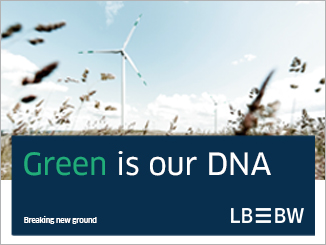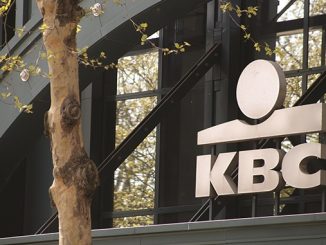
Nationale-Nederlanden Bank (NN Bank) on 10 May issued the first Dutch green covered bond, reinforcing the group’s ESG drive, including the establishment in 2020 of Woonnu, a mortgage provider aimed at incentivising sustainable living. Sustainabonds’ Neil Day discussed the varied dimensions of the bank’s sustainability strategy with NN Bank’s Niek Allon, head of treasury, Sander Roling, funding manager, and Patricia Plass, head of ESG office and CEO of Woonnu.
You can download a pdf version of this article here.
Neil Day, Sustainabonds: Most banks are trumpeting their sustainability credentials these days. What differentiates NN Bank from the crowd?
Sander Roling, NN Bank: Sustainability is one of the strategic objectives of both NN Bank and NN Group. With a focus on ESG, NN Bank has developed products and services, such as Woonnu, the Living Healthy Check platform and Powerly — which we can elaborate on later — that help clients improve the sustainability of their houses. In addition, Woonnu is set up as an originate-to-distribute platform and it enables us to experiment with green investors. And then we have launched our green bond framework, with the issuance of a green senior non-preferred, in order to align our funding strategy with our ESG strategy.
Niek Allon, NN Bank: It is our intention to be one of the leaders in the financial sector with respect to the environment, and to play an important role in society in that respect.
Day, Sustainabonds: How does NN Bank’s ESG strategy benefit from and fit into being part of the NN Group?
Allon, NN: In 2020, the group defined a new strategy with sustainability as an important pillar. As the mortgage originator for the group — not only for the bank’s own balance sheet, but also for NN Life — we are an important part of the NN Group. We are also aligning with all the initiatives the group is taking with respect to ESG. The group has subscribed to several initiatives like the Net-Zero Insurance Alliance, the Climate Agreement and PCAF, and we are fully aligned with all these initiatives and commitments as a bank.
Day, Sustainabonds: You’ve mentioned a few national and industry initiatives there — and on a national level the Netherlands seems quite advanced — are there any others that are particularly relevant here?
Roling, NN: Last year we also joined the Energy Efficient Mortgages Initiative (EEMI) and the Energy Efficient Mortgage Label. The objective of these initiatives is to stimulate investment in and financing of sustainable housing, and to create regulatory alignment. NN Bank and Woonnu are also two of the initiators of the Energy Efficient Mortgages NL Hub, which is a Dutch association of financial institutions to support and promote the acceleration and adaptation of energy efficient housing in the Netherlands. One of the objectives of the NL Hub is to create a data repository that includes the ESG data required to evidence alignment with the EU Taxonomy. As all financial institutions in the Netherlands need more or less the same data, it’s much more efficient to create a single database, and this also ensures harmonisation of the data and also the definitions of the data used within the Netherlands.
Patricia Plass, Woonnu & NN Bank: This cooperation is quite unique, on such a large scale, and I believe that we in the Netherlands are also the first to establish a separate hub on those matters. Almost every player in the financial industry in the Netherlands has joined this platform, so that gives us a huge leverage to align and to ensure that we receive data in this repository that we can all benefit from. You referred to the Netherlands being advanced in this field and this is another example of how we are trying to tackle this challenge, jointly and effectively.
Day, Sustainabonds: What was behind the establishment of NN Bank subsidiary Woonnu?
Plass, Woonnu & NN (pictured): The rationale was basically twofold. One, which is revenue-driven, is that Woonnu has been established as a platform also for external funders, and in that sense deviates from the current NN platform.
 The other, which is at least as important, is that we are using Woonnu to experiment in the largest sense possible on sustainability measures, how to involve and engage our consumers, but also how to involve and engage our intermediaries — which roadblocks do they see, what makes them tick, how can we help them incorporate sustainability in their advice towards consumers? In the Netherlands, more than half of mortgage applications are run via intermediaries.
The other, which is at least as important, is that we are using Woonnu to experiment in the largest sense possible on sustainability measures, how to involve and engage our consumers, but also how to involve and engage our intermediaries — which roadblocks do they see, what makes them tick, how can we help them incorporate sustainability in their advice towards consumers? In the Netherlands, more than half of mortgage applications are run via intermediaries.
So Woonnu has been set up to experiment and to see what can be done to accelerate the sustainability transition that we all need to go through and want to go through.
Day, Sustainabonds: Can you elaborate a little on what this means in practice in terms of your offering?
Plass, Woonnu & NN: First of all, we differentiate significantly in our pricing grid between an energy efficient house versus a non-energy efficient house. But we also try to incentivise consumers into making their homes more sustainable by unburdening them in the whole transition. We have a partner who can help you as a consumer to, firstly, determine the amount needed to make your home more sustainable, towards an energy label A, for example — because that’s the goal we have at the moment at Woonnu, to have all our mortgages transition towards energy label A. Furthermore, having helped you as an individual consumer determine what is necessary for your home specifically to achieve that energy label, our partner then guarantees the maximum investment amount needed to make that transition. And as soon as you achieve that energy label and a more energy efficient mortgage, you immediately receive a discount on your mortgage rate.
Roling, NN: To summarise: Woonnu doesn’t just arrange the green financing or mortgage, but also offers the sustainability advice and even guarantees the energy label and ensures the implementation of the sustainability improvements. And last, but not least, it then offers an interest rate discount when an energy label A or B has been achieved.
Day, Sustainabonds: I can think of various examples of greening schemes that have gone wrong as costs have been miscalculated. Is it challenging offering that guarantee? Is there risk there?
Plass, Woonnu & NN: There are always risks involved, but that’s why we have been really careful in choosing our partner for this.
And you can assign larger risk to certain building years and certain types of properties. For example, if you look at properties built in the Netherlands before 1946, it gets more complicated. So we really have to take our time to assess the house that needs to be made more sustainable and see if it economically profitable for a customer to do so. Is it worth the effort? But, in general, everything built after 1946 is very transitionable towards an energy label A.
Day, Sustainabonds: At a recent web-inar organised by the EMF-ECBC, a NL Hub representative highlighted how challenging EU Taxonomy — and EU Green Bond Standard — alignment may be. What is your position on this?
Roling, NN: NN Bank is well prepared for the EU Green Bond Standard, as the green bond framework is already aligned with the technical screening criteria for green buildings, and also the do-no-significant-harm criteria on an aggregate level. But the main challenge lies, again, within the availability of data to evidence EU Taxonomy alignment. The NL Hub is also working on a Dutch interpretation of the EU Taxonomy, which will then help to have a harmonised definition of meeting Taxonomy criteria within the Netherlands.
Allon, NN: The biggest challenge for all mortgage originators is that you are relying on your clients taking steps within sustainability. We are trying to help our clients in this respect with initiatives like Woonnu, and also Powerly, which is an internet platform where clients can check how to achieve sustainability with their budget and potential EPC labels. But in other areas you are relying on third parties, like builders, taking the necessary steps to align with the taxonomy and fulfil do-no-significant-harm requirements. And if you grant a loan for energy efficiency measures, part of it might be used for solar panels that are EU Taxonomy-eligible, but part of it might be used for a kitchen. So while we want to be a frontrunner in this field — through the Energy Efficient Mortgages Initiative and Label, and Woonnu and Powerly, and the like — there are indeed a lot of challenges going forward.
Day, Sustainabonds: What role could Woonnu mortgages play under the NN Bank green bond framework?
Roling, NN: Woonnu is a platform for third party investors, but NN Bank is one of the investors and, as such, these mortgages also form part of the green asset pool. But the green mortgages are mainly NN Bank-originated mortgages. The experiment with green investors via the Woonnu platform nevertheless helps to develop and improve NN Bank mortgage products as well.
Day, Sustainabonds: In contrast to several countries, properties with EPC A labels make up a relatively high share of the housing stock in the Netherlands — how did you go about meeting the “top 15%” criteria?
Roling, NN: Basically, we use a twofold standard in our green bond framework for houses built prior to 2021. So in order to be an eligible green mortgage, it has to have an energy label A, and it should be part of the top 15%. This top 15% has been determined by our green consultant CFP Green Buildings. Currently 20% of the Dutch housing stock has an energy label A, and in order to create a top 15%, CFP has identified EPC scores related to historical building regulations in the Netherlands, which have become more stringent over time. CFP has determined that properties built after 2003 automatically belong to the top 15% most sustainable properties in the Netherlands, and in our green asset pool, the cut-off year is 2005. We have identified €4bn of mortgages that fulfil these criteria.
NN Bank portfolio: energy labels (in number of houses)

*Note: Newly built properties without full address have been excluded from the Eligible Green Loan Portfolio as the external consultant is not able to verify energy label and property data due to missing address/property data; Source: NN Bank
Day, Sustainabonds: You inaugurated your green bond framework with a senior non-preferred issue last year. How did you approach the market and why did you inaugurate the framework with a senior non-preferred issue?
Allon, NN (pictured): The first step was, of course, to establish the green bond framework. In this respect, you have to have the right story to tell and show that ESG is part of your DNA. As I’ve said, we want to be a frontrunner in sustainability, and the initiatives that we have committed to and green products we offer — with Woonnu and Powerly, for example — were a good basis for us to start on the green bond framework.

Once this was established and published, the next step was to engage with investors. We had multiple meetings with them prior to the summer to explain the framework and our ESG strategy, and we got really good traction. At the same time, we needed to issue MREL-eligible paper, and senior non-preferred qualifies for that, so it was a natural choice for our first issue.
The debut was very successful. We issued €500m of senior non-preferred and it went better than expected. We got a very large order book, around €2bn for the €500m size, with over 90 investors involved, very granular. So it was very well received and performed well. We paid only a small new issue premium, showing the trust investors have in NN senior paper.
Roling, NN: What was also very welcome was that when we looked at the order book, there were many new investors. So the green angle definitely helps to broaden and to diversify our investor base.
Allon, NN: That’s indeed another important part of the case for establishing the green bond framework and issuing green bonds, the investor diversification — being a frequent issuer in a market, especially of covered bonds, that is very helpful.
Day, Sustainabonds: You have just launched your first green covered bond, the success of which stood out when others were finding the market difficult. Was that by design, or good fortune? What can you tell us about your approach and the deal’s execution and reception?
Allon, NN: Correct, the deal was successful in a difficult market. But that followed a week where we saw some other green bond issuance that was quite successful. That gave us some confidence to go out with our deal. But we indeed saw some other issuance struggle that week. I think that was mainly related to maturity: we aimed for a 10 year transaction — which fitted our balance sheet and maturity profile very well — and that was spot on, whereas some other issues had longer tenors and they were less well received by the market. So the maturity we chose was an important part of our success, especially in attracting bank investors, too.
The green element was very helpful as well. It’s difficult to say in the end how much it helped, but we’ve seen an exceptionally large order book, €2.3bn, and the green aspect really contributed to this and also to a high number of investors subscribing to the transaction.
Plass, Woonnu & NN: We have a very credible story to tell, which has definitely helped on the green side in the market. We already have a large share of green mortgages on NN Bank’s book — Woonnu even has 86% of its total origination being A label, so we are good at this. So we walk the talk, not only by issuing off the green bond framework, but in all the initiatives around it.
Day, Sustainabonds: Dutch financial institutions can come across as quite forward-thinking when it comes to ESG and we saw a green RMBS from Obvion a few years ago, yet your green covered bond was the first from the Netherlands. What should be make of that?
Allon, NN: It’s difficult to say and I can’t speak for others in this respect. For us, it was a natural development. It partly depends on the green portfolio that you have available, and with €4bn available, we have ample room to raise green funding. It might be that others have less scope for issuance and then they rather reserve it for senior issuance than for covered bond issuance. Covered bond issuance is especially important for the financing of our balance sheet and, as I mentioned, investor diversification is important and green definitely helps there.
Day, Sustainabonds: Aside from the ESG angle but linked to your new covered bond, it came just after you gained approval from investors to convert your outstanding conditional pass-through covered bonds into soft bullets, which you have switched to for all your new issuance. How have your structural moves supported your issuance?
Allon, NN: We decided to terminate the CPT programme and we wanted to have it cleaned up, so to speak, before going to the market with a new issuance. I think we’ve been very careful in the way we went about this, being very transparent and explaining the rationale to investors — also paying a small fee — and in the end they received this very well and the end result was very positive. That then allowed us to return to the market with a soft bullet and we now having a curve outstanding with additional points in a single covered bond product, which helps with transparency and liquidity.
Day, Sustainabonds: What might we see in terms of sustainable issuance from NN Bank going forward? And more generally, NN Bank has grown strongly and is now number five in the Dutch market — can investors expect further consolidation of market shares and what does that mean for NN Bank‘s future funding?
 Roling, NN (pictured): The Woonnu platform offers sustainable investment opportunities in green mortgages, which in turn will help to grow NN Bank’s presence and our own balance sheet. But we have no targets on mortgage volumes to originate. It also depends on pricing levels, and we want to be a profitable bank. At this moment it is difficult to predict where the housing market will go to, but when we look at green mortgages, the focus on sustainability is there. And with energy prices rising, we see that the focus of our clients is also shifting and increasing in order to improve the sustainability of their home, and ultimately that will definitely help to reach our net zero targets.
Roling, NN (pictured): The Woonnu platform offers sustainable investment opportunities in green mortgages, which in turn will help to grow NN Bank’s presence and our own balance sheet. But we have no targets on mortgage volumes to originate. It also depends on pricing levels, and we want to be a profitable bank. At this moment it is difficult to predict where the housing market will go to, but when we look at green mortgages, the focus on sustainability is there. And with energy prices rising, we see that the focus of our clients is also shifting and increasing in order to improve the sustainability of their home, and ultimately that will definitely help to reach our net zero targets.
Allon, NN: We have now issued more than €1bn in green bonds, and we have currently identified €4bn of green assets, so there is room to issue more green bonds going forwards, and we will do so. At the same time, the Woonnu platform is available for third party investors to join and to invest directly into sustainable green Dutch mortgage loans.
Day, Sustainabonds: What are the main challenges ahead?
Plass, Woonnu & NN: If I look at what we are focusing on for the coming year or two, firstly in terms of my NN Bank ESG office responsibility, it’s data that’s really a huge area of concern. Alignment of data, getting the amount of data right, also looking at the EU Taxonomy — it’s a big challenge and hence a very important issue to focus on.
And for Woonnu, as we discussed earlier, it’s how to engage and unburden consumers, but also their intermediaries, who are critical in the Dutch residential mortgage market — that’s what we will continue to focus on.
Day, Sustainabonds: How do social and affordability considerations play into your activities and sustainable bond issuance thinking?
Roling, NN: We’re definitely also focused on the social aspects. We want to help customers who have financial difficulties, and the bank therefore provides coaching and tools intended to create insights into someone’s budget and explore, for example, how to reduce monthly payments. NHG loans also form part of the green asset pool and NHG mortgage loans focus on helping clients with lower incomes by guaranteeing the notional so the client will not end up with the remaining debt in case the house is sold for a lower price. And NN Bank has joined initiatives such as the Schuldeiserscoalitie (the Dutch coalition of creditors), a coalition whereby large Dutch financial parties work together to fight poverty in the Netherlands. Another nice initiative in this respect is the launch by NN Bank of the Living Healthy Check platform. With this platform, we give customers insight into the air quality of their homes and help them to improve this.
However, a social bond is currently not a valid option for NN Bank as we do not have social housing on our balance sheet — although NN does at the group level and it is part of their green bond framework.
Plass, Woonnu & NN: In this respect, NN Group recently launched a €500m investment programme for sustainable Dutch residential real estate, focusing among others on the social aspect — again showing that we want to be an industry leader in this area as a group.
Sustainabonds conducts all research and writing independently to maintain the full editorial integrity of the publication.
As a supporter of Sustainabonds, LBBW is facilitating a series of interviews with leading players in ESG and the green, social and sustainability bond markets.




